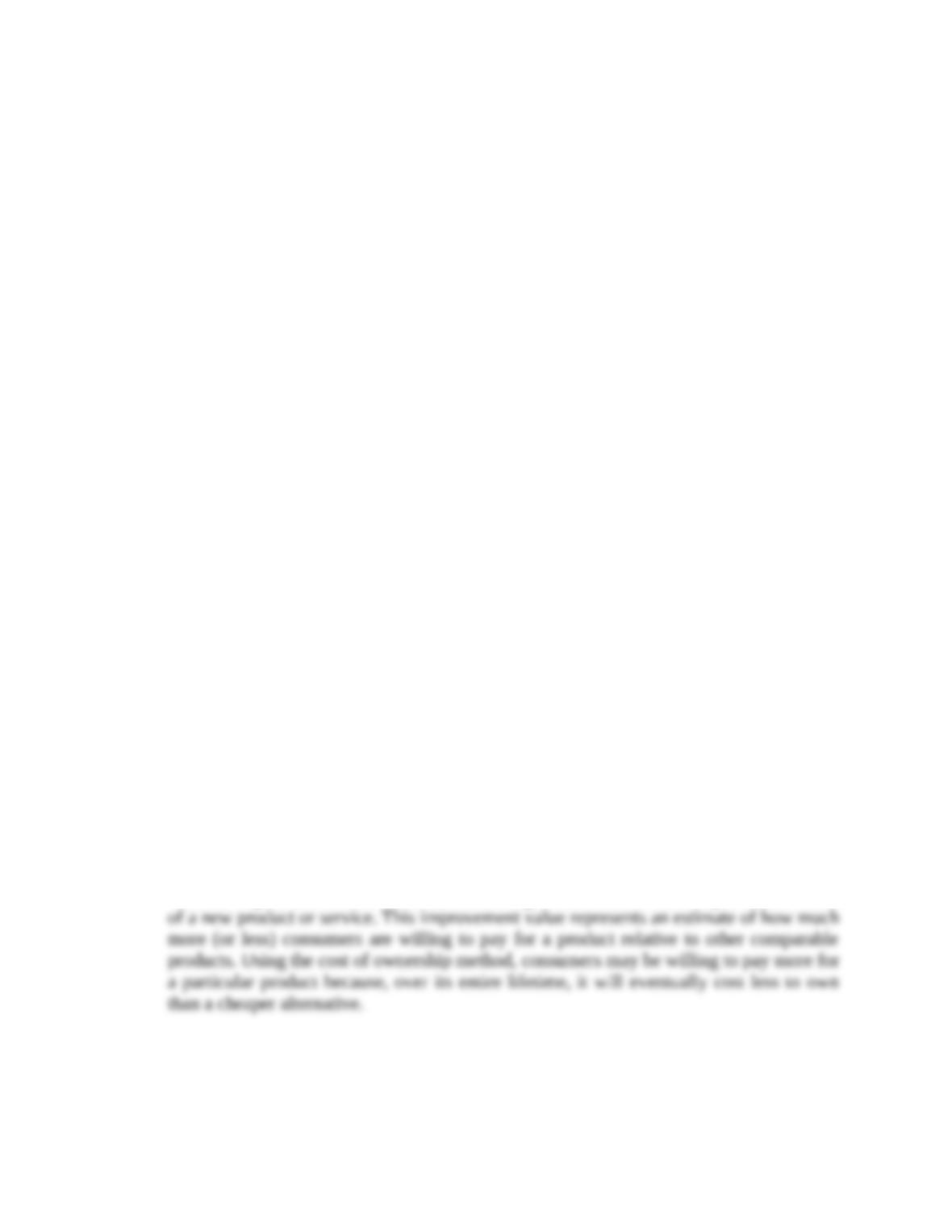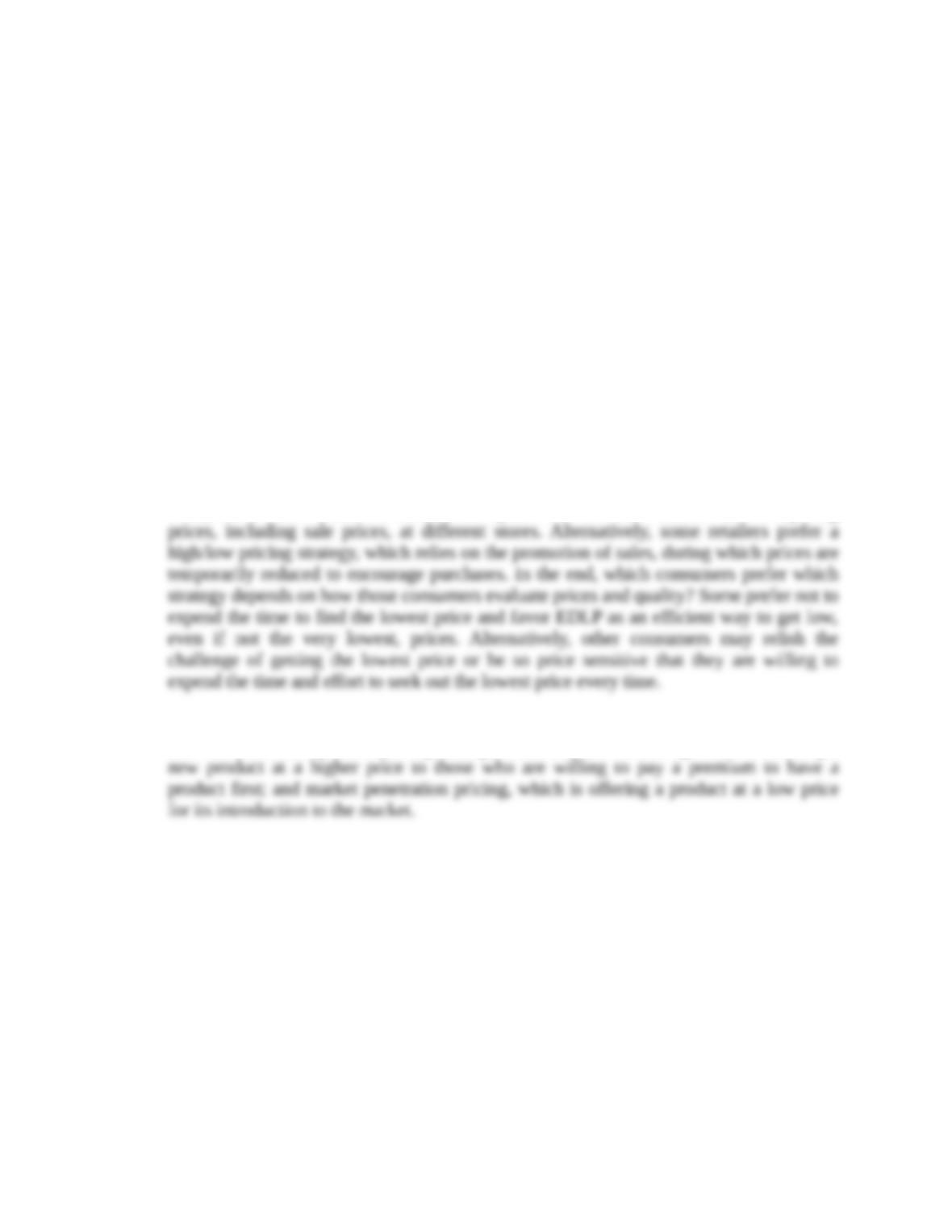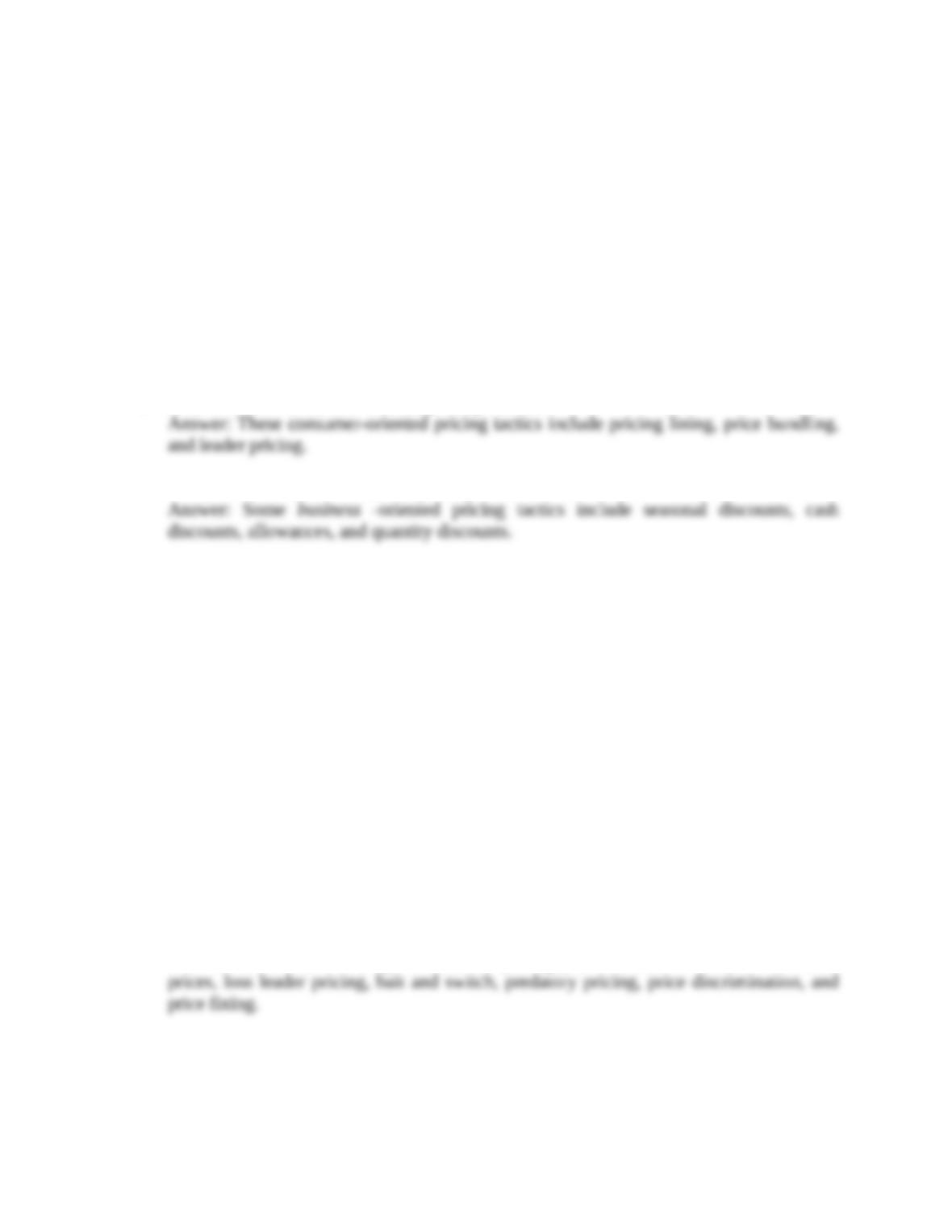LO1 Identify three methods that firms use to set their prices.
The various methods of setting prices have their advantages and disadvantages. The three
primary methods are cost-based, competitor-based, and value-based. The cost-based techniques
are quick and easy but fail to reflect the competitive environment or consumer demand. Although
it is always advisable to be aware of what competitors are doing, using competitor-based pricing
should not occur in isolation without considering cost considerations and consumer reactions.
Taking a value-based approach to pricing, whether the improvement value or the total cost of
ownership approach, in conjunction with these other methods provides a nicely balanced method
of setting prices.
LO2 Describe the difference between an everyday low price strategy (EDLP) and a
high/low strategy.
An everyday low pricing strategy is maintained when a product’s price stays relatively constant
at a level that is slightly lower than the regular price from competitors using a high/low
¬strategy, and is less frequently discounted. -Customers enjoy an everyday low pricing strategy
because they know that the price will always be the about the same and a better price than the
competition. High/low pricing strategy starts out with a product at one (higher) price, and then
discounts the product. This strategy first attracts a less price sensitive customer that pays the
regular price, and then a very price sensitive customer that pays the low price.
LO3 Explain the difference between a price ¬skimming and a market penetration pricing
strategy.
When firms use a price skimming strategy, the product or service must be perceived as breaking
new ground or customers will not pay more than what they pay for other products. Firms use
price skimming to signal high quality, limit demand, recoup their investment quickly, and/or test
people’s price sensitivity. Moreover, it is easier to price high initially and then lower the price
than vice versa. Market penetration, in contrast, helps firms build sales and market share quickly,
which may discourage other firms from entering the market. Building demand quickly also
typically results in lowered costs as the firm gains experience making the product or delivering
the service.
LO4 Identify tactics used to reduce prices to ¬consumers.
Marketers use a variety of tactics to provide lower prices to consumers. The tactics include
markdowns, quantity dis-counts, seasonal discounts, coupons, rebates, leasing, price bundling,
leader pricing, and price lining. For example, leader pricing involves retailers pricing certain
products or services at very low prices, with the hope that these same customers will also buy
other, more profitable items.
LO5 Identify tactics used to reduce prices to businesses.
Seasonal discounts give retailers an incentive to buy prior to the normal selling season, cash
discounts prompt them to pay their invoices early, and allowances attempt to get retailers to





